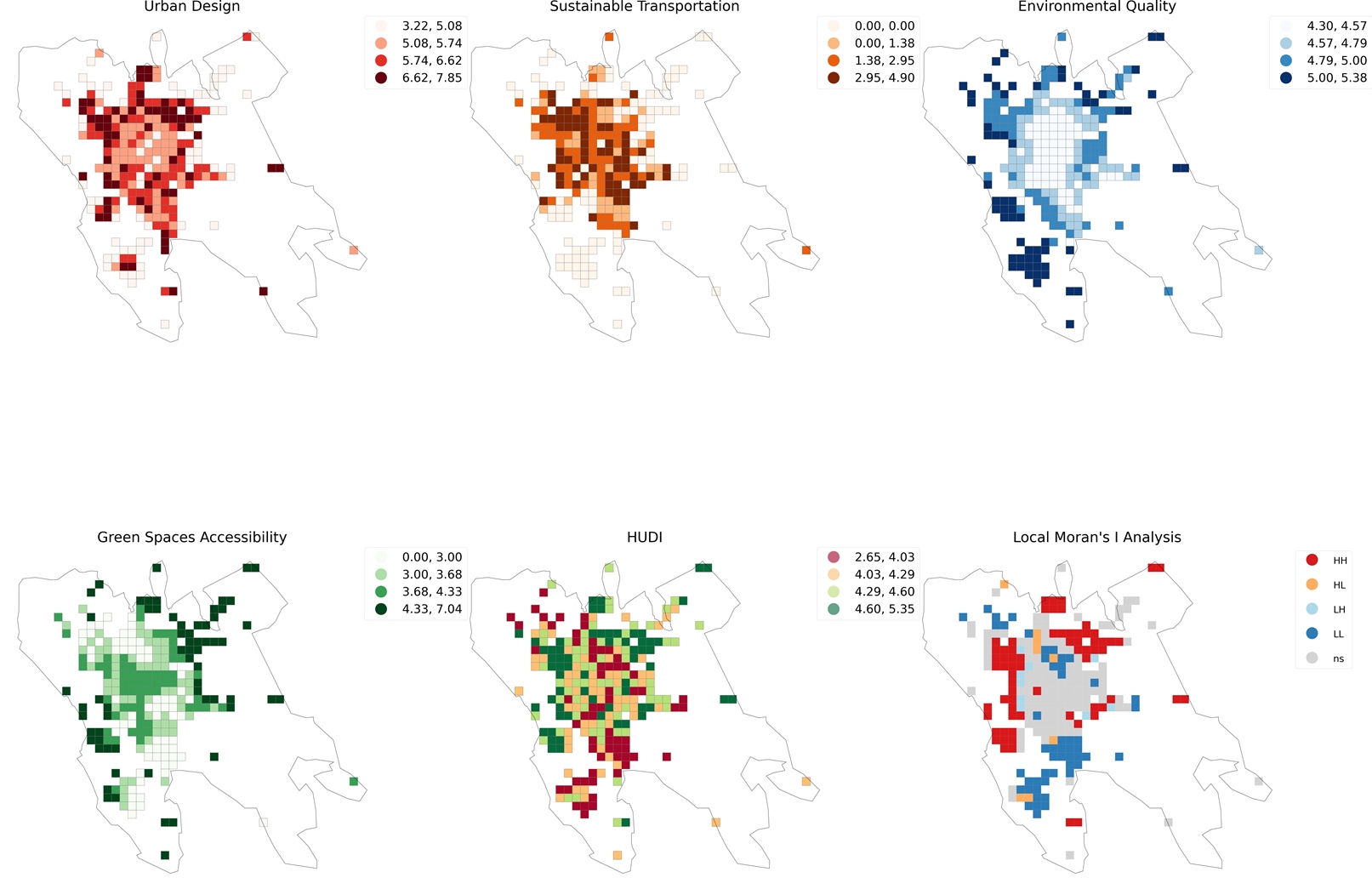RANKING POSITION
Category: Small urban areas
343/638
AVERAGE SCORE
5.22/10
INDICATOR SCORES
Urban Design
Green Accessibility
Environment
Transportation
INDICATOR SCORES
SPECIFIC VALUES
The first four maps illustrate the spatial distribution of indicator scores across four domains—urban design, sustainable transportation, environmental quality, and green space accessibility—within the defined municipal area, measured at a 250 m×250 m grid cell resolution. Darker colors represent better scores in each domain.
The fifth map presents the overall HUDI score, derived from a combination of all 13 indicators. In this map, darker green shades indicate better overall performance.
The sixth map-local Moran's analysis-identifies spatial clusters of high and low indicator scores, highlighting areas of concentration.
Legend values correspond to the combined scores for the indicators listed in the table above.
SHARE THE RESULTS
Federica Montana, Natalie Mueller, Evelise Pereira Barboza, Sasha Khomenko, Tamara Iungman, Marta Cirach, Carolyn Daher, TC Chakraborty, Kees de Hoogh, Alice Battiston, Rossano Schifanella, Mark Nieuwenhuijsen. Building a Healthy Urban Design Index (HUDI): how to promote health and sustainability in European cities. The Lancet Planetary Health, June 2025.
DOI: 10.1016/S2542-5196(25)00109-3
https://linkinghub.elsevier.com/retrieve/pii/S2542519625001093
